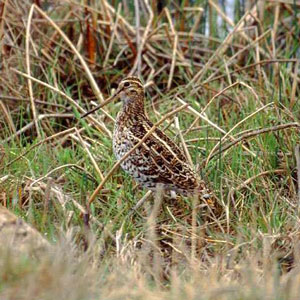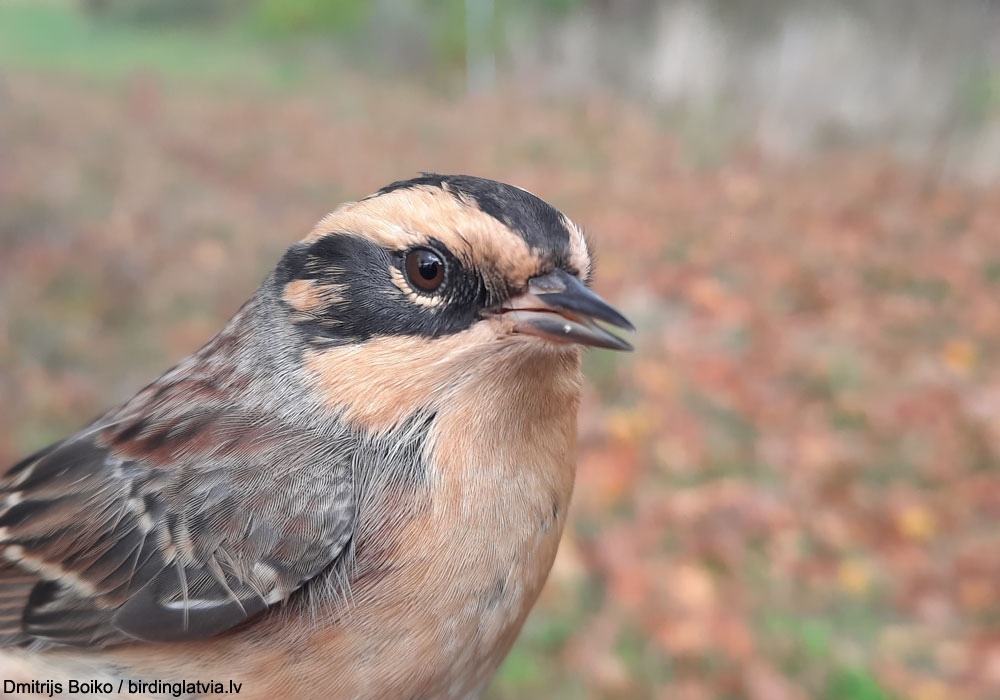Magazine | Voyages
Voyage ornithologique au Bélarus (Biélorussie) en mai 2009 (seconde partie)

Bécassine double (Gallinago media) au Bélarus.
Photographie : Pavel Simeonov
Introduction
Le Bélarus (Biélorussie) couvre une superficie de 207 600 km². Sa partie nord se caractérise par de vastes forêts de conifères (la taïga) et de nombreux lacs, des tourbières et des rivières. La partie sud du pays, la Polésie, est constituée de marais, de forêts de chênes et de prairies humides traversées par des rivières qui débordent au printemps.
Les conditions naturelles, sociales et politiques ont permis la conservation de vastes écosystèmes qui ont souvent disparu dans le reste de l’Europe.
Le pays reste méconnu des observateurs de l’Ouest de l’Europe, du fait notamment d’un régime assez fermé: pourtant il offre la possibilité de découvrir des oiseaux nicheurs très attractifs comme le Chevalier bargette, la Bécassine double, la Mésange azurée, l’Aigle criard, le Phragmite aquatique (principale population mondiale) ou les Chouettes lapone et de l’Oural.
Nous avons participé du 9 au 22 mai 2009 à un séjour organisé par Branta-Tours (www.branta-tours.com) et guidé par Pavel Simeonov et des professionnels locaux. Le groupe était constitué d’une dizaine d’observateurs français. Dans cette seconde partie du rapport, nous décrivons les sites visités et les espèces observées du 18 au 22 mai.
Abstract
Belarus covers an area of 207.600 km². Its northern part (the Lake District) is characterized by vast coniferous forests and numerous laks, bogs and rivers. The southern part of the country, known as Polesie, has a landscape made up of fens and transition mires, as well as broad-leafed forests traversed by plain rivers with waterlogged floodplains.
The natural, social and political conditions in Balerus have favorised the formation and the conservation of several ecosystems, animals and plants that are rare or threatened in Europe. Belarus has preserved vast natural landscapes, such as river floodplains (i.e. the Prypiat’s floodplain) and wetlands.
Large tracts of raised pine bogs, impressive mature mixed forests dominated by spruce, birch and aspen, all types of marshes and bogs, well-conserved floodplains (such as the one of the Prypiat river) offer numerous opportunities to watch several sought after-species like Terek Sandpiper, Great Snipe, Great Grey and Ural Owls, Lesser Spotted and Greater Spotted Eagles, Three-toed and White-backed Woodpeckers, Greenish Warbler, Aquatic Warbler (the main population in the World) and numerous oriental passerines, raptors and waders.
Brown Bear, Wolf and Lynx are representatives of the major carnivores; Raccoon Dog and Pine Marten are among small predators. European Bison, Beaver, Elk and Wild Boar are also well represented.
In May 2009, we participated in a tour organized by Branta-Tours and guided by Pavel Simeonov and local guides, visiting different natural areas from the north to the south of the country.
In this second part of our report, we present the visisted areas and the birds watched from the 18th to the 22nd of May.
Poursuivez la lecture de cet article, en vous abonnant dès maintenant !
Découvrez les Archives d’Ornithomedia.com
Pour seulement 10,00 €TTC/an (ou 6,00 € les 6 mois)
Profitez de plusieurs centaines d’articles en accès illimité et sans aucun engagement.
Compléments
À lire sur le web
- www.france-belarus.com
- belarus.courriers.info
- www.ambafrance-by.org
- www.belarusguide.com/nature1/Nature.html
- www.aquaticwarbler.net
- APB-BirdLife Belarus: www.ptushki.org
Ouvrages recommandés
- Carte Ukraine, Belarus, West Russia
- Le guide ornitho : Les 848 espèces d’Europe en 4000 dessins de Grant, Mullarney et al.
Partir au Bélarus avec Branta-Tours
Plus d’informations sur www.branta-tours.com
Source
A. V. Kozulin et al. (2005). Treasures of Belarusian Nature: areas of International Significances for Conservation of Biological Diversity.







Aucun commentaire sur ce sujet
Participer à la discussion !